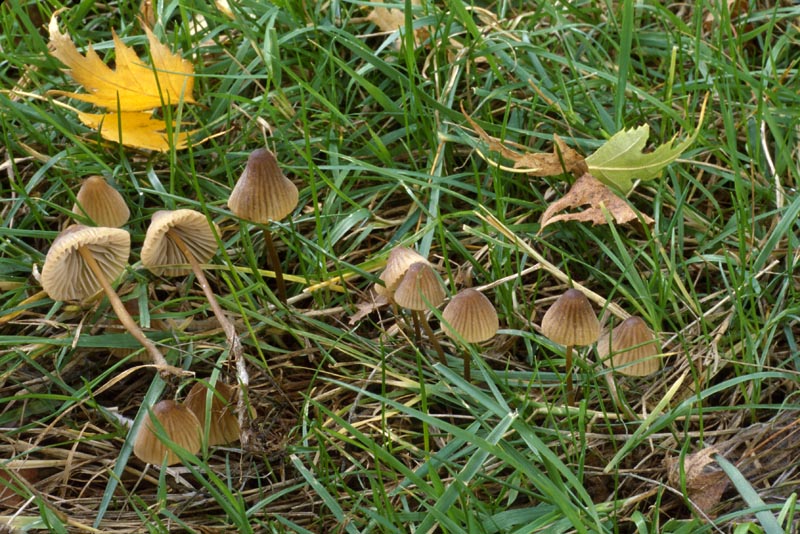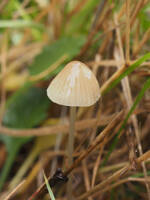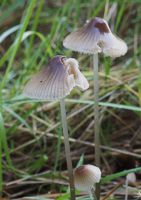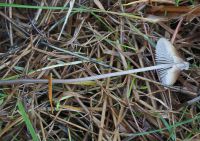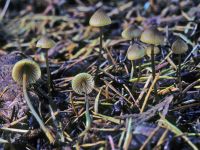Distribution: Wide variety of habitats, including under trees in forests and parks, among fallen leaves, in the midst of mosses, on rotting tree bark, and in city-dwellers’ lawns.
Spores: 8--12 x 4--5.5 µm
Conservation Status: Not of concern
The cap color can be anything from pale yellowish to olivaceous to date brown, the gills from whitish to yellow-gray usually with a lemon yellow edge (hence the species epithet), and the stipe a range similar to that of the cap. According to Alexander Smith, “A distinct correlation between the color of the carpophores and the amount of light in the habitat has been found. Out in the open, the fruiting bodies are very dark brown and have sordid-brown gill edges. In the deep shade of conifer thickets, a very pale delicate yellow to whitish form is found. The majority of the fruiting bodies collected in moderately open stands are intermediate between the extremes. The odor and taste of M. citrinomarginata are non-distinctive. Its spores are 8--12 x 4--5.5 µm, and the cheilocystidia varied, often with complex, branching, finger-like protrusions, especially in older fruitbodies.
PNW Herbaria: Specimen records of Mycena citrinomarginata in the Consortium of Pacific Northwest Herbaria database
CalPhotos: Mycena citrinomarginata photos

